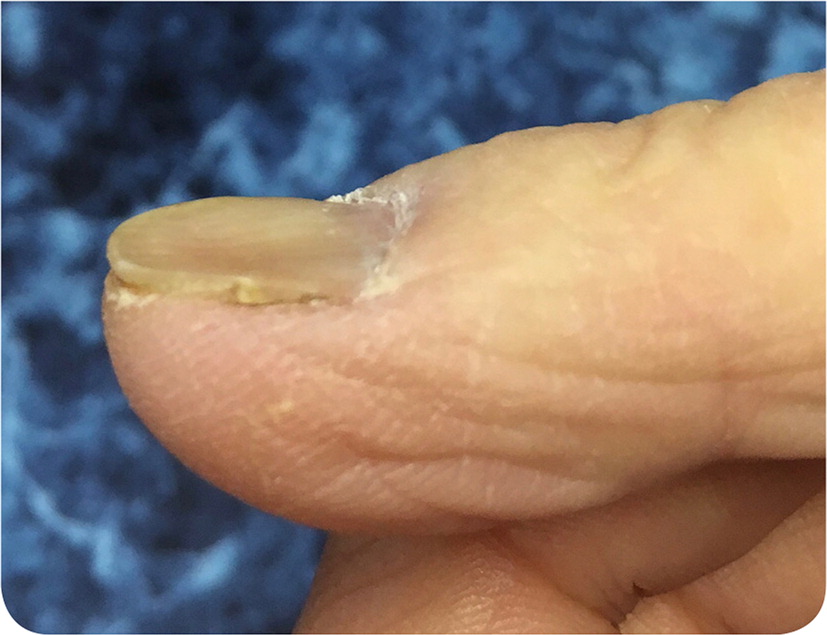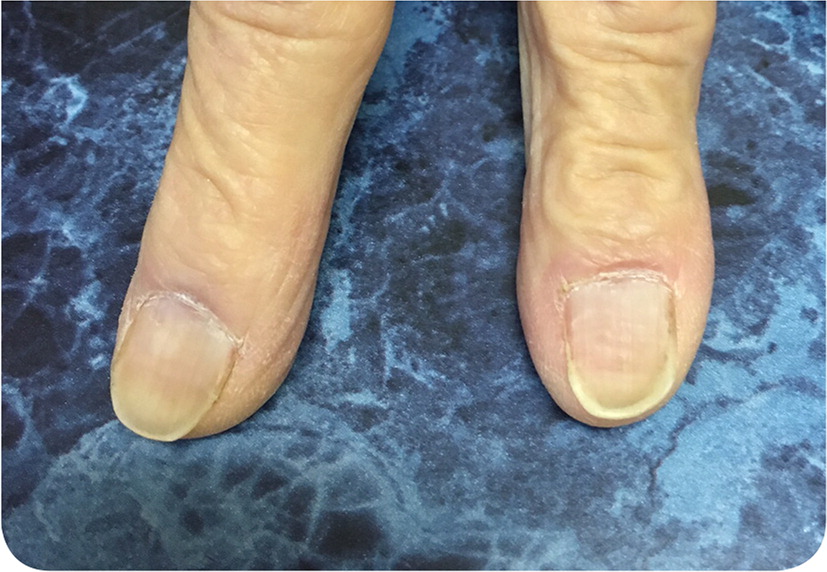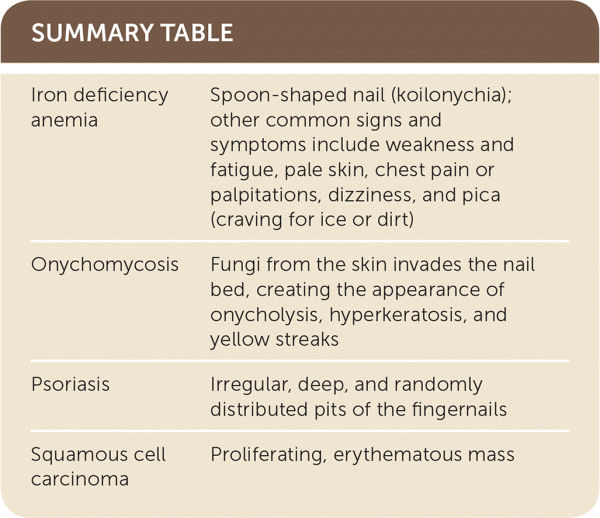
Am Fam Physician. 2018;97(7):465-466
Author disclosure: No relevant financial affiliations.
A 90-year-old man presented with increasing fatigue over the previous two to three months. His daughter reported that he was fatigued with simple activities of daily living. The patient had not been seen by a physician for approximately 10 years. He reported a decreased appetite and mild dyspnea on exertion, but no chest pain. He had no symptoms of depressed mood. He had a history of poststreptococcal glomerulonephritis when he was a teenager, but no other medical conditions.


Question
Discussion
The answer is A: iron deficiency anemia. Spoon-shaped nails (koilonychia) are often indicative of a systemic illness. Iron deficiency anemia is the most common cause of isolated koilonychia.1 Patients with iron overload, as in hemochromatosis, may also develop koilonychia.2 A complete blood count and ferritin level should be ordered for patients with koilonychia to rule out iron abnormalities. Koilonychia can also be caused by occupational exposure to solvents or by chronic trauma,3 and it is a normal physiologic finding in infants.2 Other common signs and symptoms of iron deficiency anemia include weakness and fatigue, pale skin, chest pain or palpitations, dizziness, and pica (craving for ice or dirt).
Onychomycosis, a fungal nail infection, commonly affects the toenails but can also affect the fingernails. Fungi from the skin invades the nail bed, creating the appearance of onycholysis, hyperkeratosis, and yellow streaks.2 Proximal subungual onychomycosis, which appears as fungal hyphae in the deeper layers of the nail plate, is more common in patients who are immunocompromised and requires systemic treatment.
Squamous cell carcinoma, a proliferating, erythematous mass, originates from the surrounding tissues and may be mistaken for onychomycosis.2 There should be a high index of suspicion for squamous cell carcinoma when treatment for onychomycosis is ineffective. A biopsy confirms the diagnosis.

| Iron deficiency anemia | Spoon-shaped nail (koilonychia); other common signs and symptoms include weakness and fatigue, pale skin, chest pain or palpitations, dizziness, and pica (craving for ice or dirt) |
| Onychomycosis | Fungi from the skin invades the nail bed, creating the appearance of onycholysis, hyperkeratosis, and yellow streaks |
| Psoriasis | Irregular, deep, and randomly distributed pits of the fingernails |
| Squamous cell carcinoma | Proliferating, erythematous mass |
